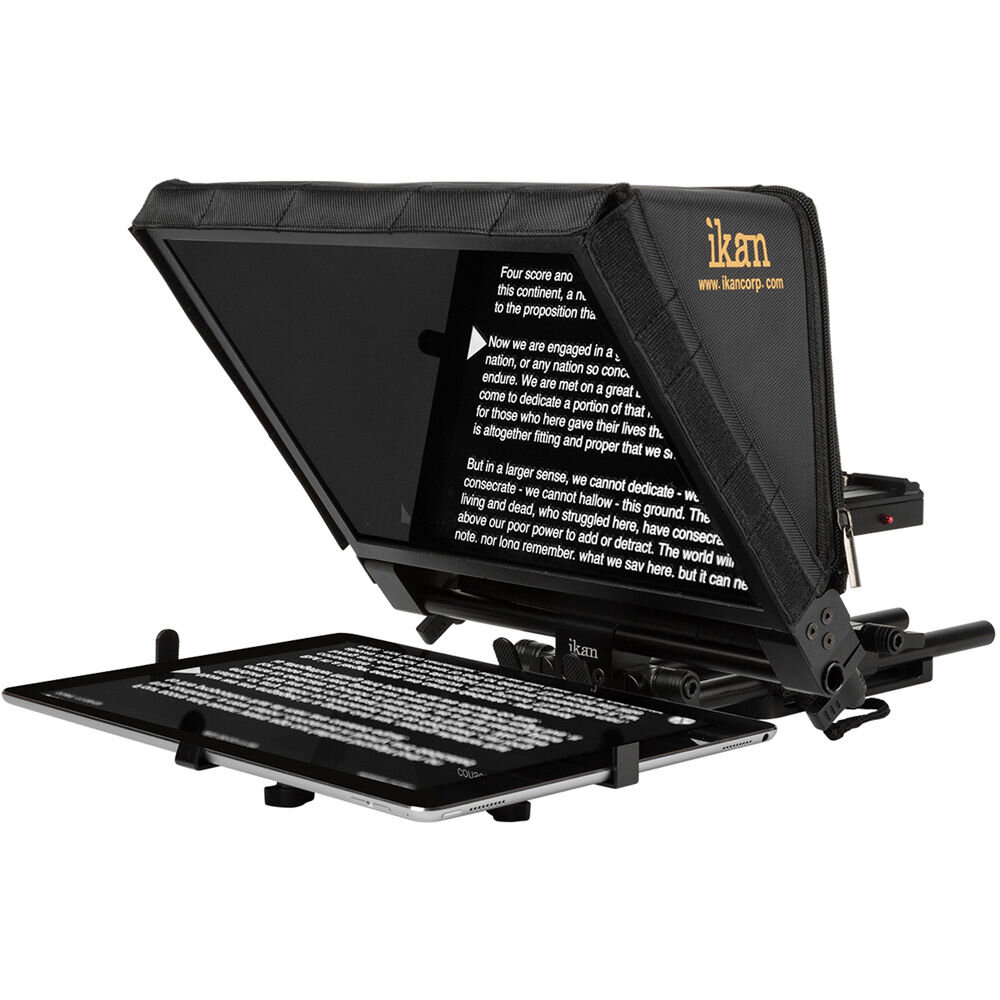15 Tips for the Perfect Corporate Video
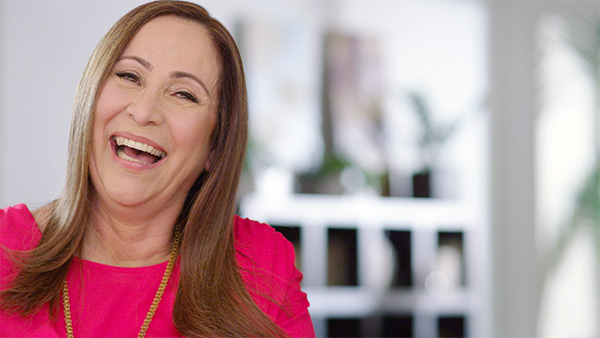
Here are our top 15 tips for a perfect Corporate Video
- Understand Your Target Audience
- Use Your Videos Purpose to Rally and Focus Teams
- Teleprompter vs. Conversational Talking Points
- Over-Preparation Ruins Talking Points
- Audio Quality is the Secret Sauce
- Lighting, not the Expensive Camera, Makes a Video Look Good
- 1 Camera Vs. 2 Camera Interviews
- A Splash of Your Personality is the Difference Between a Boring and Engaging Video
- Scout Your Locations
- Wardrobe Considerations
- Pre-Production Cannot Be Skipped
- Nervous Talent? Over Directing Doesn’t Help Them
- Record Multiple Options – Long & Short Answers
- Drop the Acronyms and Buzzwords
- Be Authentic – Stumbles, Stiffness, Flaws are Natural
Understand Your Target Audience
Who will be watching the video? Your team should be able to answer this question in substantial detail by creating a buyer persona. A buyer persona will assist you with making decisions like what information should and should not be included in the video. Below are some example questions to help you develop a buyer persona.
How to develop a Buyer Person:
- What tone resonates with them?
- Do they prefer detail or high-level summaries?
- What is their educational background?
- How do they make purchasing decisions?
- What’s important to them?
- How old are they on average?
- Where are they in their career?
- Are they a decision-maker or an influencer?
Some of these questions may be difficult to answer, but you should have a buyer persona established that is as detailed as possible for your target audience.
A buyer persona can be used when your team asks itself questions like, should this video be humorous or serious?
Would humor sit well with your typical customers or would it feel inappropriate and rub them the wrong way?
For example, would humor be the best tool for a cemetery trying to sell lots in their cemetery? Most likely not, but of course, there are exceptions to the rule. Use your buyer persona to ground your team and focus them on what your customer will connect with.
Use Your Videos Purpose to Rally and Focus Teams
Similar to knowing your audience, you need to have a clear purpose for your video. What goal are you aiming to accomplish?
Too often, businesses try to have multiple goals that dilute the effectiveness of the video. There can be secondary benefits, but make sure you have a single primary purpose.
Videos can be substantial investments, but it will do you no justice to justify that expense with a mediocre video that has 5 diluted goals vs. 1 highly intentional video that accomplishes your goal. Invest confidently and clear a path for that investment to succeed.
Below are some examples of video goals and purposes:
- Increase the number of leads
- Set more initial sales meetings
- Showcase services and products in a visual format vs. text
- Increase brand awareness
- Increase awareness about a new product or service
- Explain complex concepts (Explainer Videos)
- Explain your company’s approach and philosophy to help pre-qualify leads
Once you have established the goal and purpose for your video, rally your team around this goal. Every decision should be made with this ultimate goal in mind.
If your goal is to set more sales meetings, you might decide to have a more obvious and clear call to action (CTA).
The end of the video might directly ask a viewer to click a link to submit their contact information for scheduling a meeting. If your goal is to showcase your products and services, you might focus on breadth rather than depth to educate viewers on your company’s offerings.
Use your buyer persona and video’s purpose as grounding guides in pre-production planning meetings.
Teleprompter vs. Conversational Talking Points
Determining if your talent reads a script verbatim off of a teleprompter or prepares conversational talking points is a significant decision in your video planning process.
Teleprompters are tempting because they seem like the easy choice to deliver the perfect message to your audience, but they have downsides.
Teleprompters are difficult to read naturally and only trained professionals like TV news anchors are able to read them somewhat naturally. Business professionals are likely to read them in a monotone voice and with a cadence that feels scripted.
If a teleprompter is placed too close to the talent, you can also see their eyes moving left to right as they read the teleprompter. This gives away to the audience that they are reading a script.
So why would you use a teleprompter? Although a teleprompter has its shortcomings, they are useful for important sensitive messages.
Is your company being acquired and do you need to announce the news to your employees? Important news delivered wrong could lead to lower employee morale and resignations over fear that their job will be deemed unnecessary.
Delivered correctly, you could have higher employee morale and optimism around an acquisition and the new opportunities it brings. In these cases, a teleprompter is recommended because even if an audience can tell you are reading, it’s better than delivering a confusing and unclear message.
The alternative to a teleprompter is to prepare talking points.
Talking points are a list of topics you would like to cover during a conversational interview on camera. You might prepare sub-points or notes for each talking point, but you are not preparing sentences or perfect answers like you would for a teleprompter script.
The key to talking points is to prepare enough to feel comfortable discussing your talking points without preparing scripted answers.
An interviewer will then ask you questions based on your talking points to elicit a natural response from you. In many cases, the interviewer will not be visible or heard in the final video edit, so remember to reframe the questions in your answers.
The interviewer is there to help create a conversational discussion that is guided by your talking points. To an audience, an interview like this feels less scripted, more authentic, and you can usually see the personality of the interviewee much more than a scripted video.
Over-Preparation Ruins Talking Points
When do talking points go wrong? When your talent over prepares by creating rehearsed and scripted answers for their talking points. By overpreparing like this, their talking points have now effectively become a script that will feel stiff and inauthentic.
Why is this over preparation bad? Your talent will get frustrated during the recording that they can’t nail the response they practiced so much at home. You will see them getting more panicked and angry with themselves creating an even stiffer response.
When this happens, it often feels like you should have just used a teleprompter because the talent is so focused on reciting a scripted answer. I’ve even had talent ask me to hold their notes by my face as I interview them because they want to recite their answers so badly. Don’t let this happen.
It’s critical that you explain the importance of practicing talking points out loud to your talent, but caution them to not create scripted answers. Practice is a great idea as long as they are not hunched over a desk with a pen and paper scribbling notes and planned responses all over their talking points.
Audio Quality is the Secret Sauce
How often do you watch a video and think to yourself, “that’s some really clean sounding dialogue audio?”, likely not often. High-quality audio is something you don’t consciously notice when watching a video, but it subconsciously gives a video that professional feeling. You may not notice it when it sounds great, but you will definitely notice it when it sounds poor.
Production quality, especially with audio, can elevate your brand.
So what is good audio quality? From an equipment standpoint, audio quality is dependent on using a well-placed lavalier microphone on your talent and/or an overhead shotgun microphone. Placement of these microphones is critical for optimal performance.
High end microphones can cost anywhere from $350-$1,000+, but the rich silky dialogue you can capture on them is absolutely worth it. On many of our productions, we use redundant microphones in case the talent accidentally touches a microphone under their clothing or moves out of range of an overhead microphone. This is something a professional and experienced video production team will do as a matter of course.
Audio quality is so important that redundancy is needed.
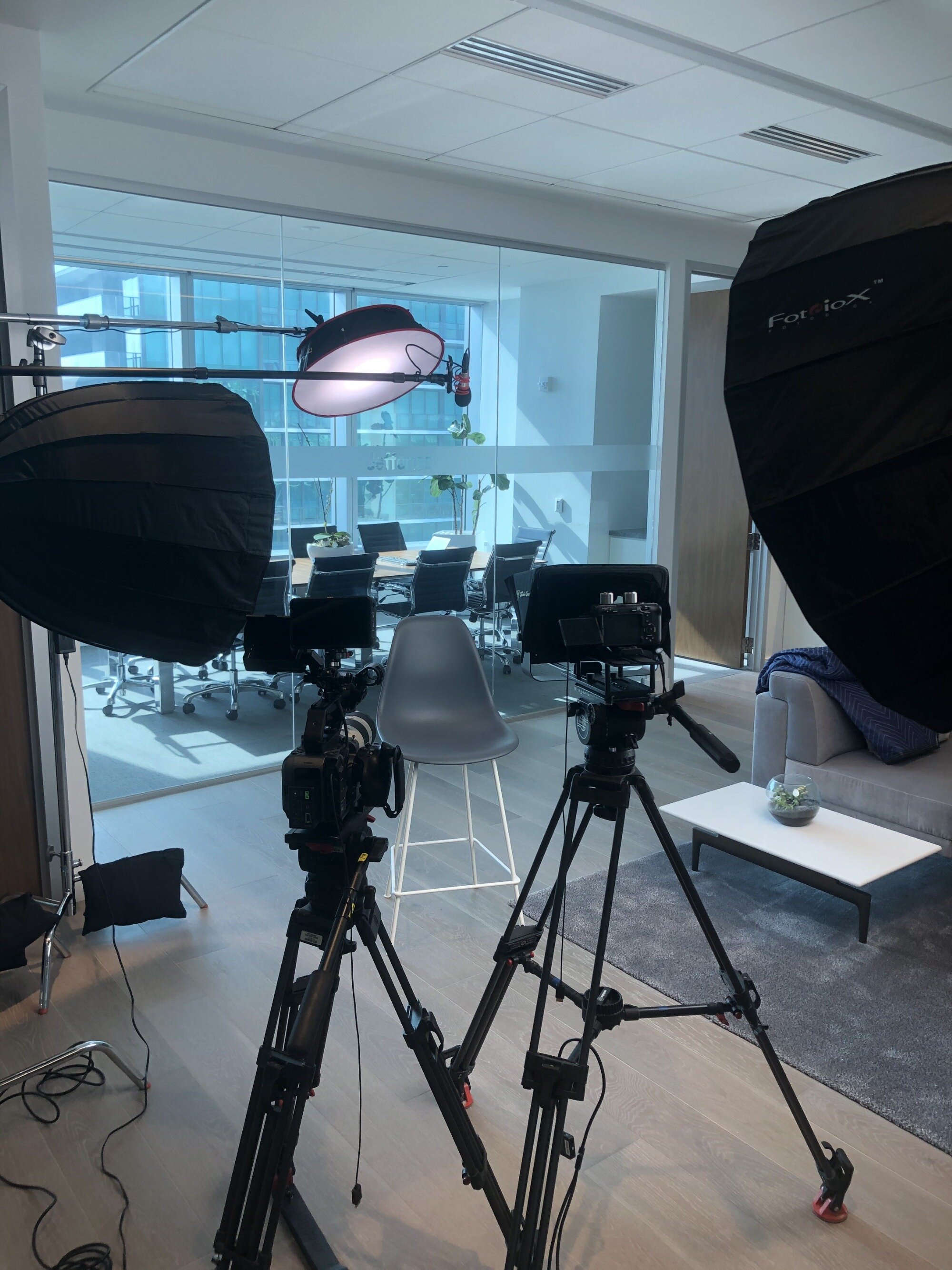
In this behind-the-scenes shot, you can see an overhead mic placed just above the chair and close to where the talent will sit.
The room you record in will have a large impact on sound quality too. Is the room an empty square box with lots of hard reflecting surfaces? A room like that will create a strong reverb and echo that is audible in your recording.
Are you recording in an active office with employees walking by and talking loudly? Microphones are sensitive and will pick up these background sounds.
You need a quiet space to record that ideally is void of any echo.
Look for rooms that have irregular shapes or are filled with lots of soft furniture or window drapes. These rooms absorb echoes and reflect sounds in such a way that reduces reverb.
Lighting, Not The Expensive Camera, Makes a Video Look Good
One of the tell-tale signs of an amateur filmmaker is their strong focus on asking what camera someone used to film a video. They attribute video quality to certain brands, camera price points, and model numbers instead of lighting, camera movement, and the creative direction of great Directors/DPs (Director of Photography). It’s an easy trap to fall into, if only you had that expensive camera that you can’t afford, you could then produce beautiful stunning images.
Does this mean you should film your corporate interview on a GoPro? No, please don’t do that. However, if you have a $3,000 mirrorless prosumer video camera that films in 4k resolution, you likely don’t need a $30,000 RED Cinema camera. Instead, you should focus your budget and time on lighting your scenes and talent to create the images you desire.
Part of the high-end look filmmakers are seeking is found in soft pleasing shadows on their talent’s faces paired with gradual highlight roll-off (how gradually the bright spots on a face transition to shadows).
This requires the correct usage of diffusing lights and creating large light sources (larger the light source, the softer the shadows). Lighting is also used to create depth in a shot that gives a scene a 3D appearance.
The background behind a subject may have multiple layers of dark and light areas to trick the eye. A door in the background might be dark but a lamp between the latent and the door softly illuminates the middle of the room.
Does this mean as a marketing professional that you should learn lighting? No, it means that you should really evaluate the production company you are hiring and focus more on reviewing their work vs. the equipment they own.
Is the lighting in their interviews harsh?
Are there spots that feel too bright or dark in their work?
Ask your video production company how they approach lighting for corporate videos and what you might expect to see on the day of the production.
If they sound confident in their answer with a respect for the role lighting plays in high-quality video, hire that company.
1 Camera Vs. 2 Camera Interviews
This tip is one of the simplest and should probably be a rule.
Always film a corporate interview with at least two cameras.
Why? Two cameras provide an editor with a way to remove stumbles, long pauses, and mistakes from recordings by covering up the cut by cutting to the other camera.
To the audience, this type of cut between cameras does not feel abrupt and appears like the talent never stumbled. However, if you tried to cut out a stumble with just one camera, the audience would see an abrupt jump in the footage where the mistake was removed.
Remember how we discussed that talking points are more authentic and natural than using a teleprompter? Although talking points are less scripted and prone to stumbles, using a 2-camera setup gives you the ability to remove those stumbles.
Removing these stumbles can help your video have just as professional of a message delivery as a teleprompter, but with a lot more personality.
A Splash of Your Personality is the Difference Between a Boring and Engaging Video
It’s imperative to let your talent relax and show a bit of themselves during their interview. This can be tough for businesses that lack a culture or unfortunately have an unhealthy work culture.
It’s tough for them because they are afraid to let their employees be passionate, humorous, controversial, or sad on camera depending on the subject matter. They would prefer a robotic response that is predictable and expected because they think human emotions have no place in business. Hence their lack of culture.
However, if you have a great work culture, let it shine. It’s probable that your employees all have some shared personality traits and it’s why they work at your company. Maybe most of the employees think the status quo in your industry is not acceptable and they are passionate that your company is different.
Let that passion shine.
That passion and personality gets people to watch your 3-minute long video without realizing they just watched the whole thing. It flies by as they are glued to the screen wanting to learn more and are surprised they didn’t watch another stiff corporate spiel. If it’s authentic, your audience will really relate to it. Showing your culture will also help potential clients see what it’s like to work with your team and company.
Scout Your Locations
We already touched on why locations are so important for sound quality, but how do you know if your location is a good fit before your record? You scout it, you physically go look at all your location options before the filming date. If you are partnering with a video production company this should be part of their process.
If it’s not, that’s a red flag you shouldn’t ignore.
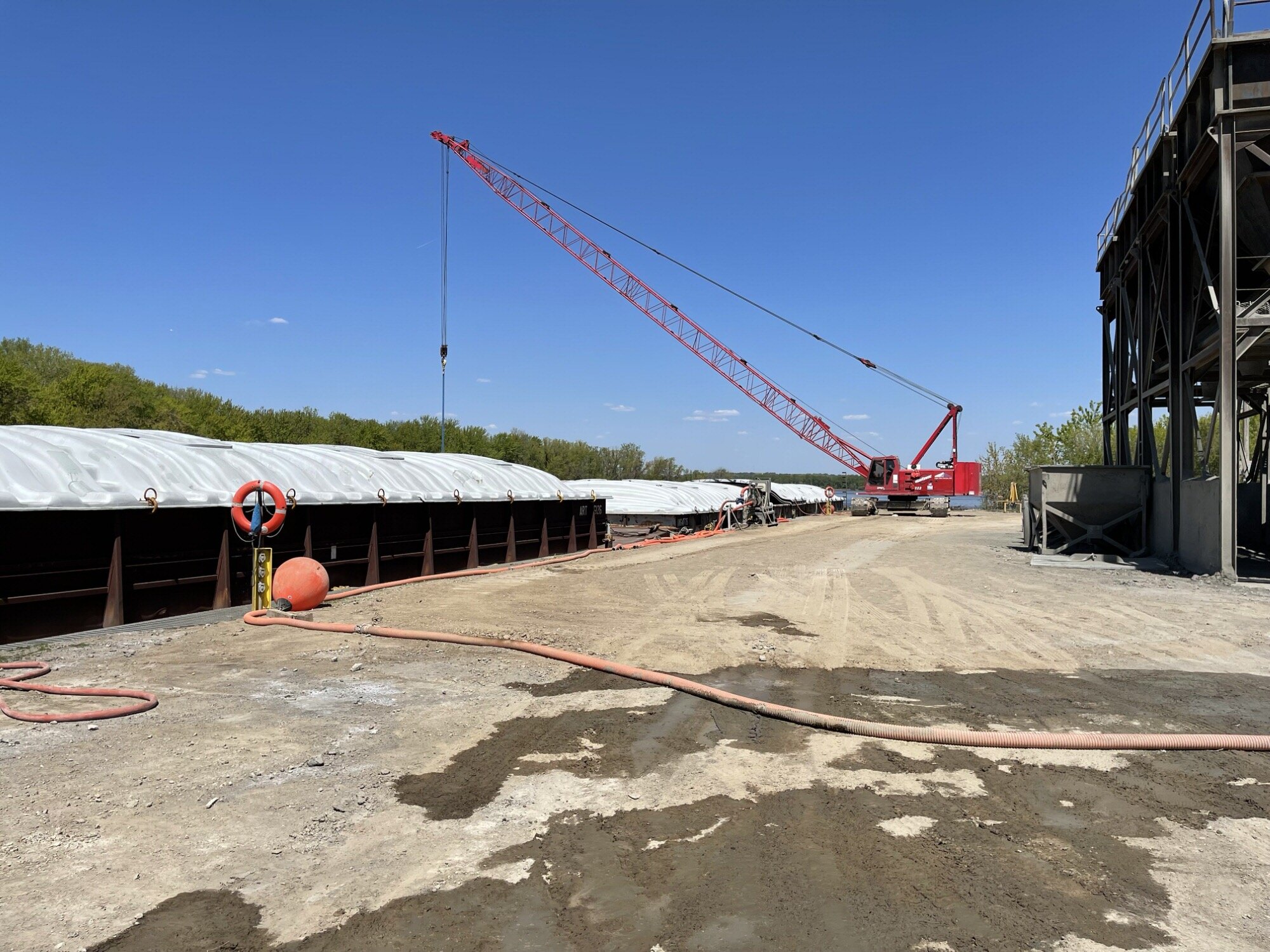
Example: Location Scout Prior to Production. We ultimately picked this location for an interview.
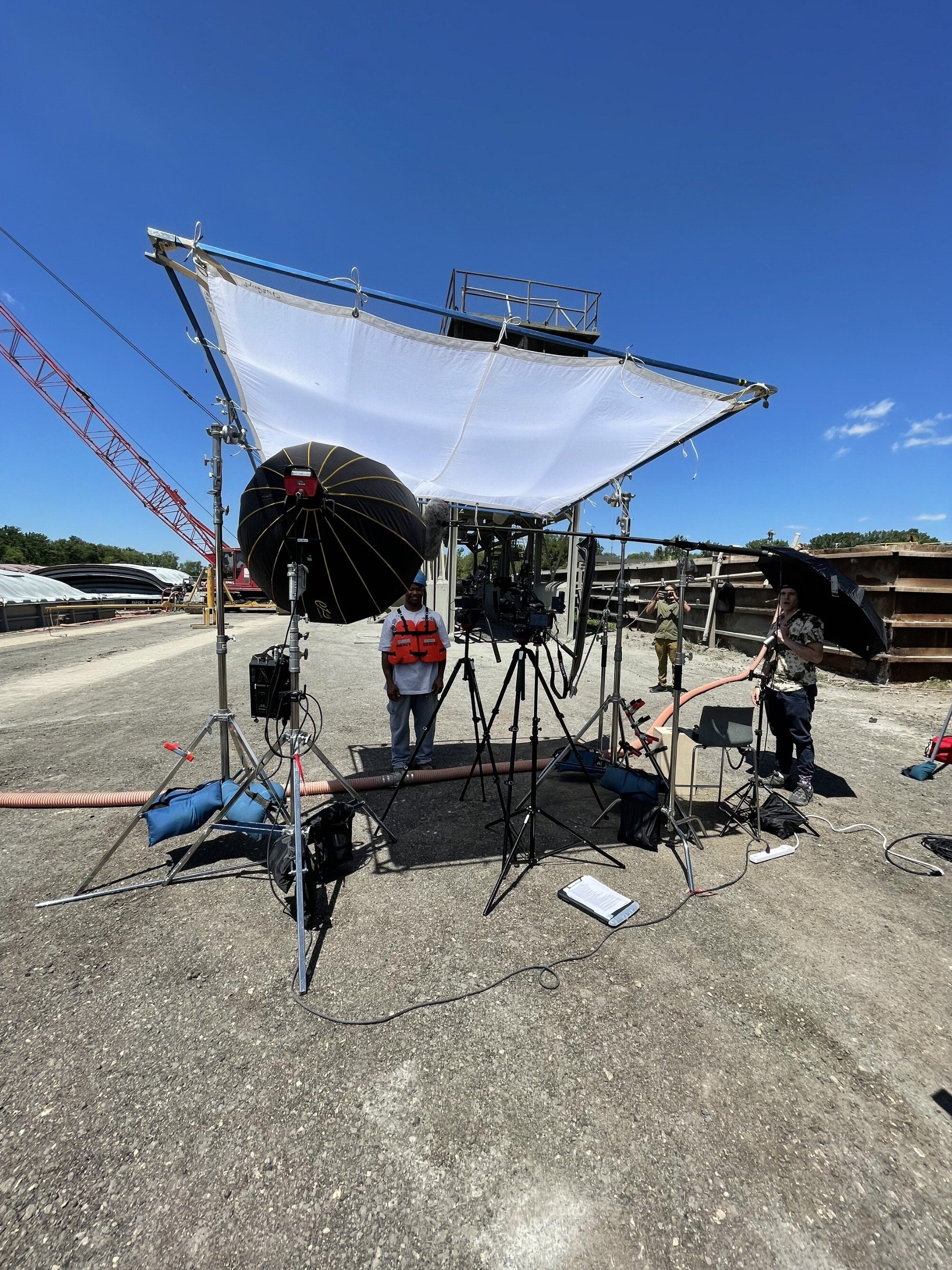
Example: Following week, behind-the-scene photo of the interview
Scouting is not just for sound, but also for lighting and shot framing. Some questions to consider on your location scout are:
- Where will the talent sit or stand?
- Will windows be too bright behind the subject?
- What time of day will you be filing and what effect will the time of day have on the lighting in your location?
- What equipment will you need to bring to control the light?
- Where will cameras and lights be placed?
- Is there enough power for all the lights?
- Will the space be noisy on the day of recording?
- Can you shut off a noisy A/C?
- Can you turn off the overhead lights?
Many of these questions if not all of them should be answered during the scout and pre-production, not during production.
Wardrobe Considerations
What your talent should wear is something that is likely intuitively in your head, but it should be proactively discussed with your talent and production company. There is always one person who shows up wearing something that you thought was obvious not to wear. Get ahead of these issues and set guidelines and rules for what to wear and not to wear. Here are some of the guidelines that we recommend on most video productions:
- Avoid pure white shirts. These shirts end up looking incredibly bright on camera unless they are paired with a jacket. White shirts also make it harder to hide a lavalier microphone under a shirt.
- No pinstripes. Thin lines on digital camera sensors can sometimes create illusions and patterns in the image that are distracting.
- Avoid busy patterns. Colorful busy patterns can often clash with the scene or are distracting when other subjects are wearing more solid colors in comparison.
- For traditional corporate videos, no plunging necklines. Beyond the risk of it looking inappropriate, it also makes it harder to hide a lavalier microphone. Your typical business dress code should apply here.
- Branded clothing is ok, but keep it consistent. Either everyone wears branded clothing or no one does.
- Avoid sheer or thin material. Bright video lights will make these materials even more transparent.
Pre-Production Cannot be Skipped
A video production has three main stages.
Video Production Stages
- Pre-production
- Production
- Post-production
Pre-production is that stage where all the planning and preparation happens before a film crew arrives on-site for filming.
You want to avoid making a production company hiring decision and then saying “ok, see you on June 14th!” forgetting about the shoot until the morning of the 14th.
I think there is a misconception that video productions are figured out on the day of the shoot. A videographer arrives with his/her camera and figures it out. While some people can film this way for event coverage, it’s a very bad idea for curated content like corporate videos.
A lot can go wrong on a video production set.
Lighting can change when cloud coverage shifts, the power can go out, or you can’t figure out how to turn off the loud A/C that delays the shoot by over an hour. That delay can cost you thousands of dollars with large productions.
Many of these potential issues can be caught early on in pre-production with a plan to mitigate them before a film crew arrives.
A video production requires a team of skilled professionals to set up lighting, sound, and cameras. These experts are aligned on telling a story and delivering on a concept that was agreed upon during pre-production meetings.
To rally this team around one vision, requires careful planning that cannot be skipped or figured out on the day of the video production. Beautiful content requires collaborative planning and execution. While video is an art form, many aspects of it are processed based and structured to mitigate disasters.
For our typical video productions, we recommend having at least 4 weeks allocated to pre-production.
Pre-Production Video Time Scale & Process Flow
- Week 1: Kick-off meeting
- Week 2: Initial concept & storyboard
- Week 3: Location scouting, script review & further development
- Week 4: Pre-production meeting and final review of the video project plan
Nervous Talent? Over Directing Doesn’t Help Them
This tip requires the most self-control out of all the ones in this article. It’s not uncommon to record people who are introverted subject matter experts with a team of extroverted marketing managers overseeing the video production.
What can happen in these situations is well-meaning extroverts have a blind spot thinking that everyone should come across as confident and natural as they would be on camera. They listen to the first take and are fidgeting in their seats watching the talent from a distance, desperate to voice their opinion. They think that take sucked.
The truth is, we probably think the take sucked too, but this is often the result of nerves, warming up, and insecurities. Immediately criticizing every single take can put someone into a nervous breakdown that produces even worse results.
Even if your talent is confident, giving too much feedback too fast will cause anyone to lose confidence. Where we all need to practice restraint is by assuming the talent knows what they want to say and assuming that they are just warming up.
A simple “let’s do another take to make sure we have options” without saying any critique can often produce great results.
Turns out that the first take sucked because the talent was getting their thoughts together, but crushed it on the second take. Did you need to say anything? No, you just needed to give them space and time to figure it out.
So how do you give feedback when it’s needed? There isn’t a hard and fast rule, but in general, feel it out first and then give feedback after an extra take or two didn’t solve the problem. Be sensitive to how stressful it is under bright camera lights and on display for the world to see.
Distill your feedback down to simple actionable inputs. If you are not clear, your talent will think you are being passive, leaving them wondering what you don’t like about their performance. Hello panic, sweating, and even more nerves.
Do they need to shorten their response because they are getting lost in their own words? Are they focusing too much on a small aspect of their response and instead should be reminded to keep it simple? Is their eye contact jumping around? Maybe ask anyone who is not needed in the room to leave to create a less distracting environment for nervous talent.
Sometimes the best question is to ask the talent what they think about the question or what is the main point they would like to get across. There could easily be a disconnect between the question’s intent and the answer the talent is trying to give. Problem solve and wordsmith it together.
Record Multiple Options – Long & Short Answers
Although video productions can be highly planned, oftentimes the final message really comes together during editing in post-production. There is always some surprising powerful message that someone delivers to the camera that was unexpected but must be included in the video. This response might change what you originally had in your mind for the video edit. It might push the video too long or could require rearranging responses.
For this reason, we recommended capturing both long and short answers to talking points. This gives an editor options in post-production to include detail or shorten the overall length of a video. Without these options, an editor might be forced to use abrupt cuts to shorten long takes making the video less professional. Asking your talent to give a shorter answer can also produce really succinct answers that are more powerful than their original longer take.
Drop the Acronyms and Buzzwords
Your target audience does not work for you. They don’t know your internal acronyms. While this is obvious, it is often forgotten because acronyms become so ingrained in our minds from how often we use them.
Avoid using acronyms by not including them in your talking points and encouraging everyone on set to be listening for them. If you hear an acronym used, re-record the take.
Buzzwords are a great way to get your audience to roll their eyes thinking “Yup, just another corporate video that says the same thing everyone else does”. Buzzwords, although commonly used, are often meaningless.
They sound fancy, but imply vague meanings and are used to cover up a lack of information and detail. They leave an audience longing for more detail like when a politician avoids a difficult question. You will lose your audience’s attention if buzzwords are used.
Avoid them at all costs.
Your innovative transformational synergies in your data center will not resonate with potential clients. Instead, what exactly is better about your data center? Your audience isn’t dumb and they are not falling your vague answers filled with buzzwords.
Be Authentic – Stumbles, Stiffness, Flaws are Natural
Do we edit out stumbles and mistakes in videos for our clients? Yes, but we also leave a handful in. A video that is completely devoid of mistakes can make it feel too perfect and scripted. Sometimes that long pause where you can see a subject matter expert thinking gives you that feeling that they really care about their words and the answer they are giving.
A CEO who slips one or two “ums” into their answer might be appropriate for a video that is focused on making them appear approachable and relatable. An engineer who is stiff, but clearly knowledgeable will draw in an audience based on what they are saying and not how they are acting.
Sure, they might stereotype your subject, but Elon Musk has paved the way showing you can have awkward body language while disrupting industries and making billions.
Does this mean we should only do one take and say screw it to all the mistakes?
No, you still want to get professional responses, but if that powerful response had a few imperfect moments, they likely add some authenticity to your video.
Corporate video tips
Techniques video
Corporate video ideas
Best equipment for social media Videos
Videography tips

